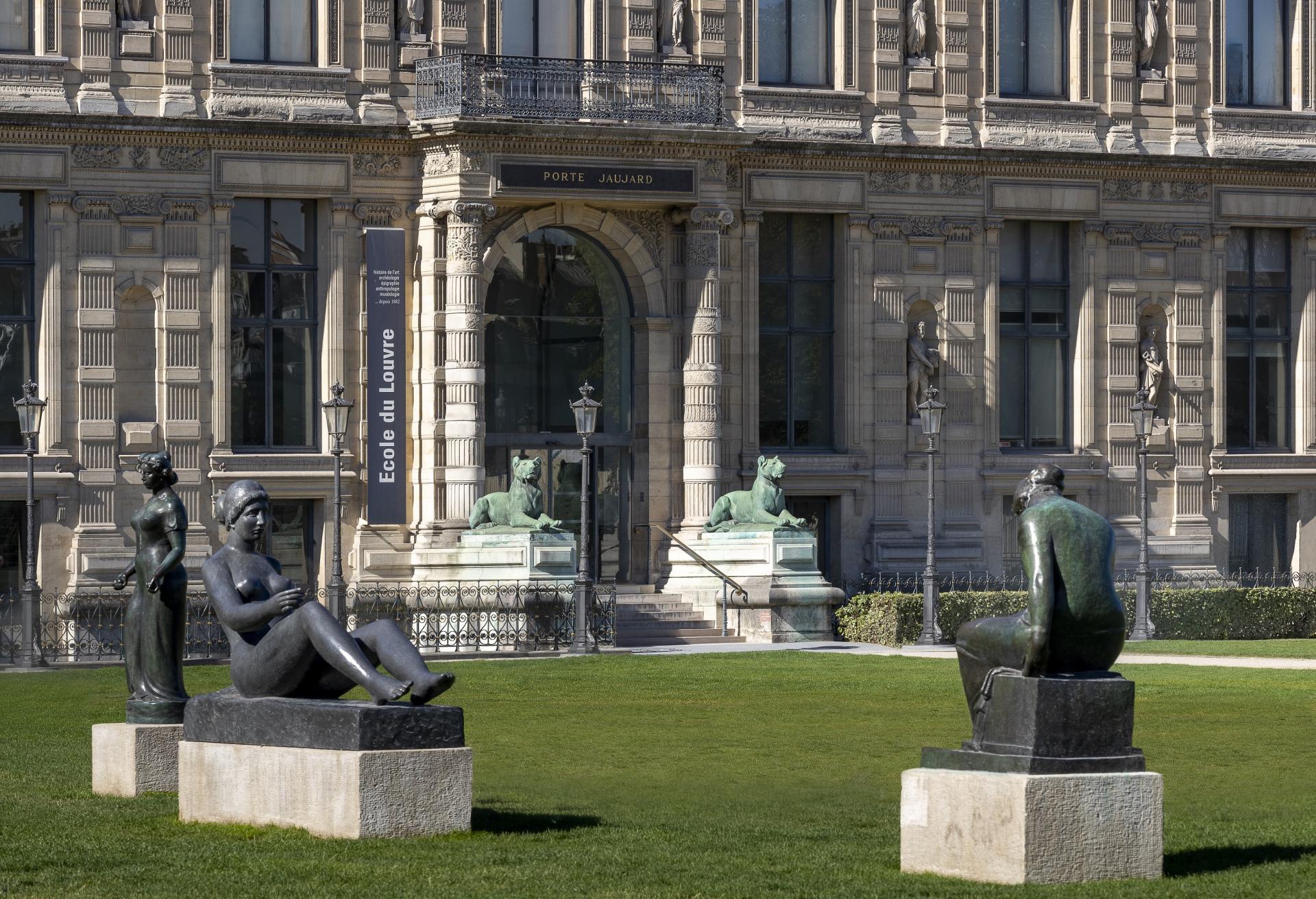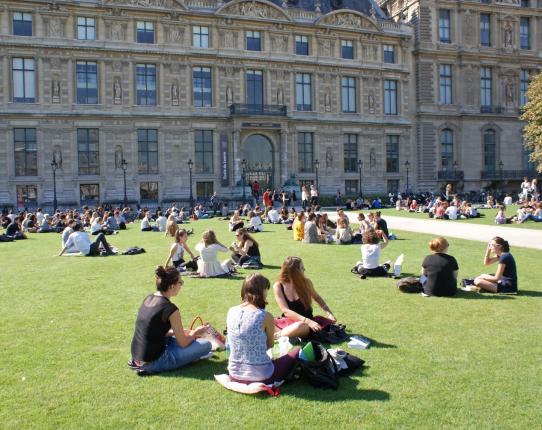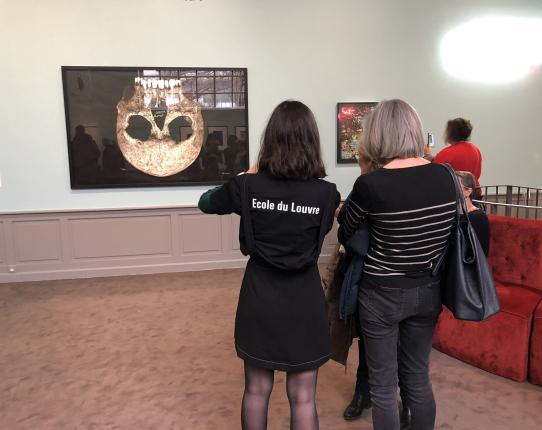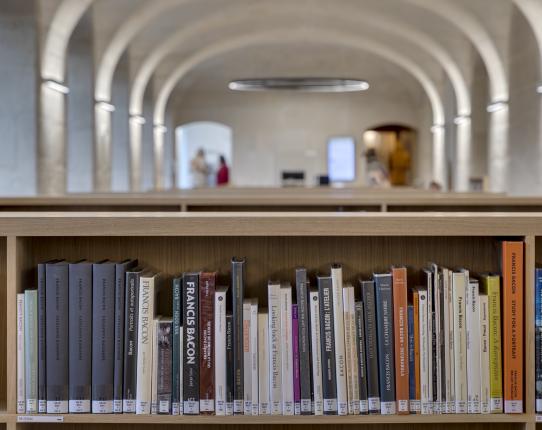
Undergraduate entrance examination
Concours d’entrée de l’Ecole du Louvre - session 2025
Tous les candidats ayant confirmé leur vœu sur Parcoursup sont admis à présenter le concours d’entrée à l’Ecole du Louvre le samedi 26 avril 2025.
Une convocation sera adressée à chacun des candidats par courriel avant le 16 avril à l’adresse électronique renseignée sur Parcoursup.
Ce courriel fera office de convocation et sera à présenter, en version imprimée, avec votre pièce d’identité (physique) le 26 avril 2025 à l’entrée du centre de concours.
Si vous n'avez pas reçu de courriel après le 16 avril, pensez à regarder dans vos dossiers « courriers indésirables » ou « spams ».
Le service de la scolarité
Contact : [email protected]
What is the specific pedagogy of the first cycle at the École du Louvre?
Two fundamental and original elements constitute the specificity of the École du Louvre's undergraduate pedagogy: its program and its method.
While French universities now favor multidisciplinarity during the first years of study, facilitating bridges between one discipline and another, the École du Louvre has chosen to focus its program on art history and archaeology, rooted in the material evidence of civilizations.
Founded on learning to look and relate directly to the work of art, apprehended in its history but also in its materiality, the School's pedagogy actively solicits memory(visual and textual), as well as reflection(comparative, contextual).
The first cycle combines two modules in an original way: the first provides a comprehensive foundation of knowledge in general art history, the second offers a choice of specialties, from among the thirty or so offered by the École.
Over a period of three years, the core curriculum successively addresses, in condensed form, all periods and continents through their artistic productions and civilizations. This is supplemented by an approach to creative techniques, the history of collections and iconography, modern languages and optional courses. In the third year, some courses are taught in foreign languages.
Assimilating this foundation of knowledge requires:
- a pronounced curiosity and taste for art, museums, heritage, reading...,
- a significant work drive,
- previous knowledge ensuring a good ability to situate oneself in space and time,
- a very good command of the written word,
- sufficient autonomy and maturity.
The assessment is based primarily on the reasoned restitution of knowledge in writing. Because of the structure and organization of teaching at the School, which is mainly entrusted to curators and museum and heritage professionals, the proportion of continuous assessment and oral evaluation is limited. Examinations are therefore mainly based on final tests, and consist of written tests: essays or commentaries on works of art, the method of which is tested during teaching in front of the work or in classrooms at the École, and tutoring sessions, offered on a voluntary basis in the first year.
The first stage of the competition: pre-selection through Parcoursup
The Parcoursup system is the only route to registration for the competitive entrance exam.
Application fee: 67 euros (scholarship holders exempt)
An initial selection of candidates is made on the basis of Première French baccalauréat grades and those of certain subjects assessed by continuous assessment during the Première year and the first two terms of Terminale.
Pre-selected candidates are called by e-mail the week before the competition for the second stage of selection.
Candidates who have taken the "History of the Arts" speciality and/or optional option in Terminale are exempt from pre-selection and called directly to the second stage.
The second stage of the competition: a written test comprising three exercises
Pre-selected candidates are then called for the second stage of the competition, which consists of a written test made up of three exercises: questions to assess candidates' ability to situate themselves in space and time; an exercise in describing a work of art; an art history composition.
- A series of questions to assess candidates' ability to situate themselves in space (reading maps, plans, etc.) and in time (mastery of chronological landmarks, use of a chronology).
As the first-year undergraduate core curriculum covers ancient periods, civilizations and archaeological sites from Oriental, Egyptian, Greek, Roman as well as Indian and Chinese antiquities, it is essential that students are able to base their future acquisitions of knowledge on solid spatio-temporal structures.
Test duration: approx. 20 min. 20 points.
This test assesses candidates' ability to observe and pay attention to a work (reprographed in color) submitted to them, as well as their ability to structure a description, combining sharpness of eye, precision of vocabulary and mastery of written expression.
This description does not include any interpretation or contextualization. A penalty of 5 points will be applied to any copy containing more than twenty spelling errors (lexical or grammatical).
Test duration: approximately 40 min. 20 points.
This written composition draws on the candidate's academic and personal culture, but also reflects the preparation for the test accomplished during the current school year. In this way, the subject to be dealt with enables the candidate to draw on some of the works currently on the syllabus (see below), and to combine them - possibly with others - in a clear, organized argument. The test also provides an opportunity to assess the candidate's linguistic accuracy and writing skills. A penalty of 5 points will be applied to any copy containing more than twenty spelling errors (lexical or grammatical).
Test duration: approx. 2h00. 40 points.
A limited list of works (between 25 and 40 maximum) is provided to candidates at the beginning of the school year on the École du Louvre website. The works on this list - heritage sites, historic monuments, objects and works held in public collections in France and abroad - make up an annual program that candidates must have worked on beforehand. A minimum of four examples, drawn from this list, will be required in the composition.
The works on the program are easily accessible on the websites of the institutions responsible for their conservation and promotion. Candidates are advised to give priority to consulting the documentary resources available online on these institutional sites. A very brief bibliography, consisting of one or two works on the general history of art, may be suggested as a supplement.
Advice on preparing for the entrance exam to the École du Louvre
Preparing for the École du Louvre competitive examination requires a solid motivationand a personal commitment. It is not, however, necessary to attend classes or group preparation.
- The first exercise relies on general mastery of a chronological and topographical framework (human history and physical geography). The knowledge acquired during secondary education provides this. It's a good idea to review this broadly, from the great periods of prehistory to the present day (key dates), from the physical and historical geography of France to the major planetary balances.
- The second exercise is a description of a work of art. There is no ready-made method for translating what you see into words. There are, however, three fundamental criteria: the ability to sharpen the eye, the precision of the vocabulary used, and the structure and quality of the text produced. This test does not require any particular knowledge of art history.
- The third exercise is an art history composition, dealing with a fairly general subject covering a long chronological period and covering a variety of geographical areas. It is based on the candidate's work on the works in the program established by the École du Louvre.
It is designed to assess the candidate's fluency in the written language, both in terms of mastery of form (spelling, grammar, syntax, elegance of style) and in the conduct of reasoned and illustrated argument. It is essential to structure this composition with an introduction, presenting the subject and its issues, and announcing the chosen plan. The development should then be organized into a number of interconnected parts, with key ideas supported by referenced examples (title [always underlined], date, conservation site/location).
The specificity of an art history composition is that it is a demonstration based on concrete examples referring to precisely named and identified works. Care should be taken not to accumulate the evocation of examples, but to introduce them judiciously throughout the development, justifying their choice. Candidates should cite at least four examples from the restrictive list of works on the program, but also highlight their personal visual culture.




